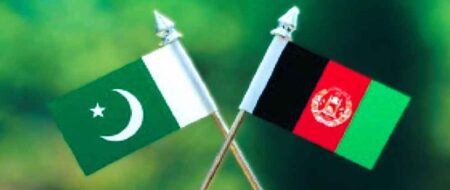US and Russia: A Tale of Loyal Enemies
Distrust and lack of communication have always hindered the thawing of relations between the US and Russia. This mutual suspicion began after their alliance against Nazi Germany ended with World War II, persisting and intensifying throughout the Cold War. Following the fall of the Berlin Wall in 1989 and the subsequent disintegration of the Soviet Union in 1991, there was a brief period of cooperation and partnership. Under President Boris Yeltsin, Russia embraced market-oriented reforms and democratic governance, seeking integration into global political and economic institutions such as the International Monetary Fund (IMF) and World Bank. Yeltsin’s successor, Vladimir Putin, even applied for Russia’s integration into NATO in 2000. However, by the early 2000s, NATO expansion, missile defense concerns, and economic challenges again strained relations, with the recent Russia-Ukraine war rendering cooperation a distant hope.
Multiple factors contribute to US-Russia animosity, perpetuating longstanding disputes. The US can be accused of neglecting Russia’s ideological, political, defense, and geographic concerns in its foreign policy decisions regarding Russia and its neighboring regions. On the other hand, Russia’s leadership has often shown a distrustful and assertive posture that has hindered meaningful engagement with the West.
The roots of Russia’s insecurities lie in its geography and demographics. According to US Air Force intelligence, Russia’s primary geographical challenges include insecure borders, limited access to global trade routes, and demographic vulnerabilities. These insecurities heavily influence most of Russia’s foreign policy choices, be it cyber operations, military buildup, or invasions of neighboring states. Most of Russia’s 24,140 kilometers of coastline lies along the Arctic Ocean, where ice restricts access for much of the year. Access to the warm-water ports through the Black Sea is limited by the maritime chokepoints of the Dardanelles and the Bosporus Strait, controlled by Türkiye, a NATO member, which complicates Russia’s trade logistics.

Image Source: Arctic Portal
Secondly, the North European Plain leaves Russia vulnerable to security threats due to its flat, easily traversable terrain, as evidenced by past military campaigns launched from Western Europe. Additionally, Russia’s declining population and low annual birth rate (1.8 births per woman in 2023) further exacerbate Moscow’s security concerns, presenting challenges for its economy and military. Russia is also grappling with a “resource curse,” where heavy reliance on raw material exports makes its economy susceptible to global commodity price fluctuations.
Given these geographic and demographic concerns, the US could have pursued a policy aimed at easing Russia’s anxieties and fostering better engagement. Instead, US policies such as selective cooperation, NATO expansion, and support for “color revolutions” aggravated Russia’s sense of encirclement, prompting more assertive foreign policy actions from Moscow.
Paul R. Pillar, a former senior CIA officer, argues that the US and its allies have perpetuated a legacy of distrust and conflict with Russia. He notes that US policy has often failed to recognize the political and social transformations that Russia has undergone since 1991. Instead of viewing Russia as “a nation that had shaken off Soviet Communism,” he noted, there is still a tendency to continue viewing Russia through the Cold War lens. Instead of capitalizing on opportunities to collaborate on shared interests like energy security, anti-corruption, counter-terrorism, and climate change, the US has primarily focused on areas such as democracy promotion, human rights, and cybersecurity. After the Soviet Union’s collapse, the US provided nearly $19 billion in aid to Russia in FY1992-2010 to encourage democracy, promote market reforms, and prevent the proliferation of weapons of mass destruction (WMD). The Bush and Obama administrations’ policies toward Russia were also bent on bringing a democratic transition to Russia.
The relationship further soured due to NATO’s expansion after the Cold War. Under Bush, the largest wave of NATO enlargement happened when Bulgaria, Estonia, Latvia, Lithuania, Romania, Slovakia, and Slovenia joined NATO in 2004 after accession talks at the alliance’s Prague Summit in 2002. The 2002 National Security Strategy of the US revolved around bringing a democratic transition in Russia. Similarly, Obama’s 2010 National Security Strategy stated that the US “support(s) efforts within Russia to promote the rule of law, accountable government, and universal values.” However, these efforts failed to get a warm response from Russia since the latter had different priorities that were more focused on economic growth, military modernization, and resisting what it perceived as Western encroachment on its traditional geopolitical interests, particularly in Eastern Europe and Central Asia.
Moreover, NATO, originally established to prevent the resurgence of nationalist militarism in Europe through a robust North American presence and to promote European political integration, was primarily aimed at providing collective security against the Soviet Union. Moreover, even after the dissolution of the USSR, NATO continued its role with only slight changes in its mandate. It wasn’t content with mere existence but expanded its membership to former Soviet and Warsaw Pact states despite giving assurances of not expanding NATO by an inch “eastwards.” The NATO expansion forced Russia to feel betrayed, as it meant an increase in the degree of proximal threat posed by the US and its allies. The US’s support for NATO expansion, while overlooking Russia’s power status in the international system, was seen as an effort to limit Russia’s influence in its “near abroad” regions.
In addition, the US tried to export its democratic and liberal values to different post-Soviet countries through “color revolutions,” or “wars without gunpowder.” The “Rose Revolution” in Georgia (2003), the “Orange Revolution” in Ukraine (2004), and the “Tulip Revolution” in Kyrgyzstan (2005) were viewed by Russia as Western attempts to undermine its influence in these regions. In 2022, the US was also accused of attempting to influence unrest in Kazakhstan, following a coup attempt, to which Putin responded, “We will not allow the boat to be rocked.” Such actions by the US did nothing but exacerbate Russia’s sense of encirclement, deepened geopolitical tensions, and worsened the ongoing rivalry between the two countries.
This approach failed to create a foundation for engagement, leading to events like Russia’s military actions in Georgia (2008), Crimea’s annexation (2014), and the invasion of Ukraine in 2022, which can be seen as reactions to NATO’s proximity and Russia’s fear of being encircled and weakened as a global power. As a result, Russia has consistently displayed a revisionist, hostile, and aggressive stance toward engagement with the US and the West.
From the confrontational Munich speech of 2007 to the Russo-Georgian War of 2008, the Kremlin’s annexation of Crimea and involvement in southeastern Ukraine, the Sergei Skripal poisoning, murders of Russian journalists, informational warfare, and the alleged interference in the 2016 US presidential elections, Russia has consistently shown reluctance to engage positively with the US.
Putin’s foreign policy emphasizes a strong, sovereign Russia capable of asserting its influence. In 2005, Putin described the collapse of the Soviet Union as “a major geopolitical disaster of the century” and that “anyone who doesn’t regret the passing of the Soviet Union has no heart.” While he has expressed regret over the Soviet Union’s collapse, he has stated that restoring it is impractical, saying “anyone who wants it restored has no brains.” This suggests that Putin seeks to establish a regional buffer zone that is “not anti-Russian” and is aligned with Russian interests, rather than rebuilding the Soviet empire. His recent statements, about “Russia and Ukraine parts of the same historical and spiritual space” further reveal his ambitions to maintain influence over neighboring territories in a new geopolitical framework.
The current international environment, characterized by strategic competition between the US and China, the Russia-Ukraine conflict, the Palestine-Israel crisis, and other geopolitical struggles, poses significant challenges to the prospects for peace. Both the US and Russia have the potential to act as peacemakers, given Russia’s involvement in conflicts like Ukraine and Syria and its partnership with China. It is imperative for both nations to move past Cold War-era thinking, recognize their roles in the global order, and work toward mutual goals.
For Russia, economic diversification is essential. Its integration into the global economy especially shifting its economic dependence away from oil and natural gas to renewable energy sources is vital. Moreover, the country’s literate population and rich natural resources also present opportunities for technological and industrial development. Russia is also likely to benefit from climate change in the coming years. As global temperatures rise, Russia’s agricultural land is expected to expand, potentially increasing its share of global food production. This could benefit not only the US but also the rest of the world, provided that trade relations are restored and sanctions are lifted. However, realizing this potential depends on the West reconsidering its sanctions-based approach and the Russian leadership moving beyond its political biases.
In this context, China serves as a key example for both sides. Through its Belt and Road Initiative (BRI), China has extended its influence by investing in infrastructure and development projects across Asia, Africa, and Europe, fostering economic partnerships without relying on direct military intervention. Diplomatically, China’s pragmatic approach emphasizes non-interference in the affairs of other countries while expanding its global presence through trade, technology, and participation in multilateral organizations like the UN and BRICS. Russia and the US could benefit from adopting elements of China’s strategy where it aligns with their interests.
Only through such an approach can the US and Russia lay the foundation for a secure, peaceful, and genuinely democratic world order. It will take a reimagined strategy focused on mutual interests and recognizing each other’s legitimate concerns.












